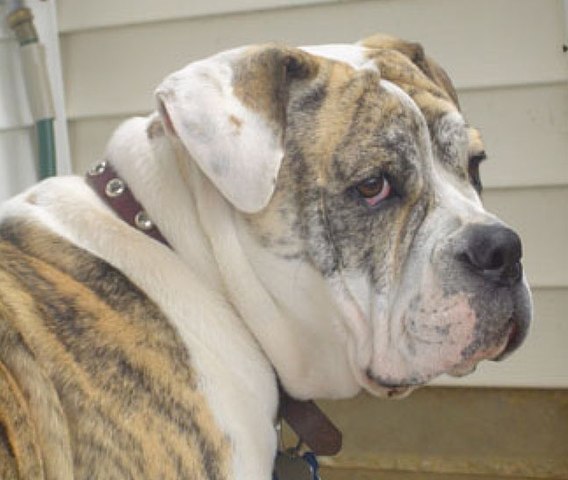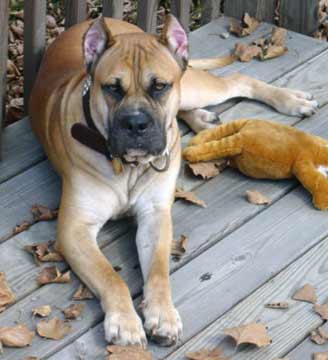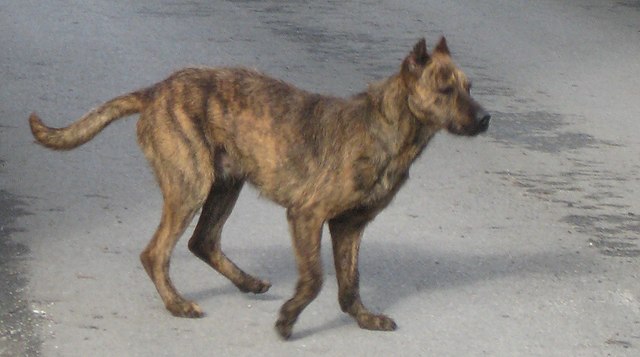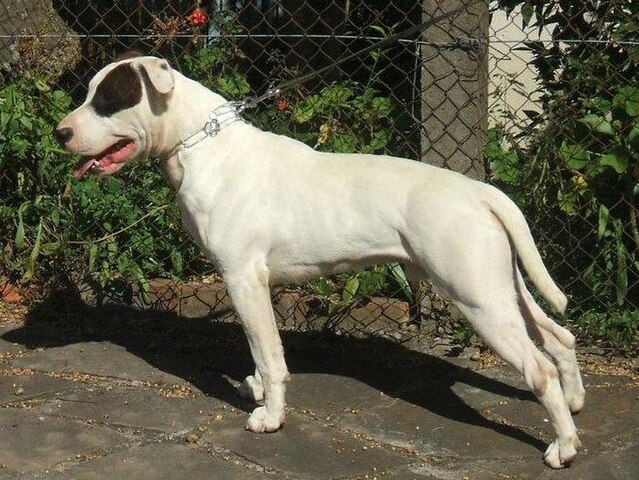The Olde English Bulldogge was developed by a man named David Leavitt from Pennsylvania in the early 1970’s. His aim was to re-create the Bulldog breed of old – a healthy and athletic dog – although without the extreme fighting drive. Original bulldogs were created for bull-baiting and similar blood sports, and when the practices were outlawed the Bulldog as a breed began to change over time. The Olde English Bulldogge was an effort to bring back the original type of dog. The four breeds that went into this new breed included the Bulldog, American Bulldog, Bullmastiff and American Pit Bull Terrier. Eventually the dogs began to breed true and crosses were no longer needed. Today they are recognized by the UKC as well as several smaller registries in the United States.
Bulldogges are versatile dogs that compete and succeed in many different dog sports. Obedience, weight pull, conformation, agility, therapy work and nosework are all activities in which the breed is competitive and can excel! They enjoy pleasing their owners and have intelligent minds. Although they may have stubborn patches, overall they take to training very well. Every Bulldogge should be given basic obedience and household rules starting from puppyhood because they are robust, strong-willed dogs with the potential to take control if given free reign. Furthermore this breed needs a job to keep from becoming bored and destructive.
The OEB and the Bulldog, although sharing many similarities, also have many differences from each other. To start, the OEB is a taller and less stocky animal. Not being as exaggerated, they do not have the same breeding difficulties as their counterparts, nor do they suffer the breathing problems that some Bulldogs are known to have. The OEB is said to be a healthier dog overall and does not suffer the same list of health issues. Average lifespan is 13-15 years in general. Energy-wise, this is a more active breed and will likely be more excited about participating in events or training pursuits. 
Olde English Bulldogges tend to love children, especially if they are raised with them, although supervision is required with very young kids. They are strong and can unintentionally hurt a toddler. Although they aren’t particularly tall (a big male may be considered medium in height), they can get up to 80 pounds which can easily do damage in roughhousing play. For the most part, as long as a parent uses common sense this can be a great family dog in the right circumstance. Furthermore, they add an extra layer of security to a household. Olde English Bulldogges can make excellent watch dogs and will alert when something is wrong.
Perhaps surprisingly, the Bulldogge can live comfortably in an apartment, but only provided that he is given lots of exercise. He also needs regular attention and will not do well with owners who work all day, so apartment-life (or any sort of life) will not work without an adequate amount of time/attention. If living in a home with a yard, his exercise needs go down a bit, although he still does need at least a medium amount. Unlike his cousin the Bulldog, he is not a good match for low-energy households.
OEBs are known for having same sex aggression, so an owner may not have luck keeping two dogs of the same sex together. While early socialization can tip the odds in one’s favor, it cannot always fix this potential issue. Some owners find that keeping only altered animals of the same sex together can help, but this only works on a case-by-base basis. Others find that introducing each new dog to the pack as a puppy can help, as well as making sure none of the dogs are close in age. All of this depends on the lines and on the individual dogs. This said, keeping opposite sex pairs is usually fine for many owners.



